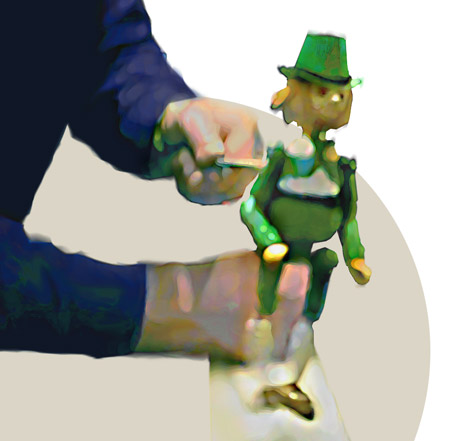 |
 |
 |
 |
 |
 |
 |

|
 |
 |
 The Dancing Doll has been a popular entertainer of both children and adults for centuries. Loose limbed, and normally controlled on a board by one horizontal string, these erratically frisking figures have been seen throughout Europe, parts of Asia, and Africa. Although the origins of the doll are not clear, most would be classified as Marionettes a la Planchette, but at some point (before the end of the eighteenth century) some became controlled by a wooden rod fixed into the puppet's back. These Jigging Puppets or Jig Dolls are normally carved or whittled and are between 20 and 30 cm high, although one made during the Napoleonic wars is only 64 mm in height. Some are dressed in fabric clothing but most have their costumes painted or drawn onto the wood that forms their bodies. A 29 cm Victorian dancing doll was exhibited at the Great Exhibition of 1851. My late father-in-law remembered seeing as a child two ex-soldiers from the Great War busking on the street corners of Birmingham. One with a piano accordion and the other with a jig doll dancing on a board taken from an orange box. In Bethnal Green Museum there is a doll made in the trenches of World War I, carved to represent "Tommy Atkins". Although having its roots in folk art the jig doll has been commercially made on two or three occasions, the most successful being Mr Jollyboy (patent number 7725) in about 1903. Written articles appear spasmodically in magazines and only one book (to date) has been published on the subject, Jig Dolls - The Brightest of Entertainers by Rennie and Pat Pickles. John Palmer |
||||
|
|
© Woodspinners 2005. All rights reserved. Site design by Illustrated History |
Woodspinners, Pedlar's Acre, 64 Weeping Cross, Stafford ST17 0DL Telephone: 01785 664467 Fax: 01785 664468 Email: john@woodspinners.co.uk |